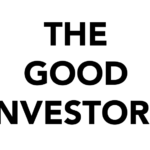The term, multi-baggers, in the context of the stock market, was coined by legendary investor Peter Lynch in his book One Up On Wall Street.
It refers to a stock that delivers more than 100% return on your investment.
Seasoned investors will tell you that just having a few multi-baggers in your portfolio can make a world of a difference.
Imagine if you had used just 1% of your portfolio to buy Netflix in 2007 at US$2.57 per share.
You’d have a 163-bagger in your portfolio today.
That 1% position will now be worth 163% of your initial portfolio.
Even if the other 99% of your portfolio went to zero, you’d still be sitting on a positive return.
But how do we unearth such long-term winners?
Here are some things that I consider when looking at which stocks can be multi-baggers over the next few years.
Potential Market Opportunity
The amount of revenue that a company can earn in the future is a key factor in how valuable the company will be worth.
As an investor, I’m not focused on quarterly results or what percentage year-on-year growth a company achieves in the short-term.
Instead, I’m more focused on the total addressable market and how much the company could make a few years out.
Let’s take Guardant Health as an example.

The company is one of the leading liquid biopsy companies.
It has non-invasive tests to identify cancers with specific biomarkers for more targeted therapy.
In addition, the company is developing non-invasive tests that could detect early-stage cancer, which has a market opportunity of more than US$30 billion a year.
Together with its late-stage precision oncology test, Guardant Health has a market opportunity of more than US$40 billion in the US alone.
Guardant Health is still in its infancy with just US$245 million in revenue in the last 12 months.
If its early-stage cancer tests gain FDA approval and are adopted by insurance companies, Guardant Health could easily increase its sales multiple folds.
Clear Path to Profitability
Besides increasing revenue, companies need to generate profits and cash flow too.
As such, investors need to look at free cash flow and profit margins.
For fast-growing companies that are not yet profitable, I tend to look at gross margins.
A company that has high gross margins will be more likely to earn a profit during its mature state.
Using Guardant Health as an example again, the liquid biopsy front-runner boasts 65% gross margins on its precision oncology testing.
Such high margins mean that the company can easily turn a profit with sufficient scale as other costs decrease as a percentage of sales.
An Enduring Moat
To fulfil its potential, the company needs to be able to fend off its competition.
A moat can come in the form of a network effect, a superior product, a patent or other competitive edges that a company may have over its competitors.
On a side note, I don’t consider first-mover advantage a moat unless it operates in an industry where a network effect is a valuable moat.
In Guardant Health’s case, the company’s tests are protected by patents, which prevents other companies from copying their products.
Management That Can Execute
Potential is one thing, but can the company execute its plans?
This is where management is important.
The company’s CEO needs to have a clear vision and execution plan.
Management is a touchy subject and requires a lot of subjective analysis.
Comparing Current Market Cap With the Potential Market Cap
Finally, after identifying a company that has a high probability of growing sales and profits multiple folds, we need to assess if its current market cap has room to grow into a multi-bagger.
It’s no use buying into a company that has all its future earnings baked into its market value.
If Guardant Health can increase its sales to just 20% of the US$40 billion addressable market in the US alone.
And generate a 25% profit margin, it will earn US$2 billion in profit annually.
Assuming the market is willing to give it a price-to-earnings multiple of 30, that translates to a US$60 billion market cap.
At the time of writing, Guardant Health’s market cap is around US$8.3 billion.
If Guardant Health can execute its growth strategy well over the next 5 to 10 years, it can become a multi-bagger.
Final Words
Multibaggers can be the difference between a market-beating portfolio and an average one.
However, finding a multi-bagger is not easy.
The company needs to tick many boxes.
And even so, there is always the risk that the company does not fulfil its potential.
In Guardant Health’s case, biopharmaceutical companies have to jump through many hoops to earn the honey pot at the end of the rainbow.
For the liquid biopsy market, Guardant Health needs its early-stage cancer test clinical trials to:
- meet its primary end goals
- gain regulatory approval
- earn trust from insurance companies and finally,
- be adopted by clinicians
These hurdles will not simply fall over and there are risks that the company will fall flat in any one of these.
As investors, we, therefore, need to consider the risk-return profile of a company before deciding if it makes sense for our portfolio.
This article first appeared on The Good Investors and is part of a content syndication agreement between The Good Investors and Seedly.

The Good Investors is the personal investing blog of two simple guys, Chong Ser Jing and Jeremy Chia, who are passionate about educating Singaporeans about stock market investing.
If you have any questions about this stock and other stocks in general, why not head over to the SeedlyCommunity to discuss them with like-minded individuals?
Advertisement

